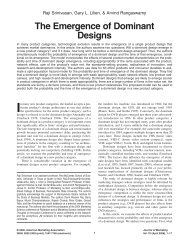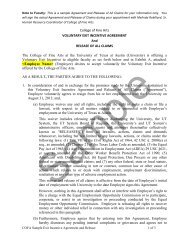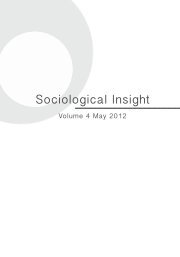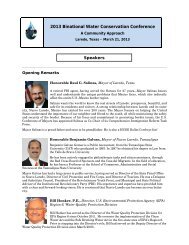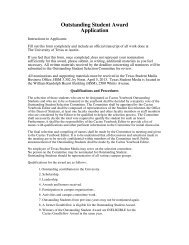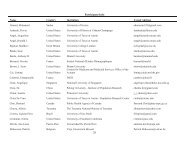Invited Talks: Transition Metal Oxides - University Blog Service - The ...
Invited Talks: Transition Metal Oxides - University Blog Service - The ...
Invited Talks: Transition Metal Oxides - University Blog Service - The ...
You also want an ePaper? Increase the reach of your titles
YUMPU automatically turns print PDFs into web optimized ePapers that Google loves.
<strong>The</strong> John B. Goodenough Symposium in Materials Science & Engineering –<br />
In Honor of His 90 th Birthday<br />
<strong>The</strong> <strong>University</strong> of Texas at Austin, Austin, Texas<br />
October 26-27, 2012<br />
Greening Digital Systems Requires Better Quantum Models<br />
Bob Schubring<br />
Wonder Funding 1680 Vine Street, Suite 325, Los Angeles, CA 90028<br />
office: 323.733.1000 | mobile: 734.320.3435<br />
Email: rschubring@gmail.com<br />
Website: http://www.wonderfunding.com<br />
Abstract Body in Space Below:<br />
(Please use single space, Times New Roman or similar font, size 12, and limit to 250 Words. Please DO NOT exceed the space<br />
below.)<br />
Polarization gradients in compositionally-graded perovskite ferroelectric thin films are known to generate<br />
electrical current by an unexplained mechanism that is not corrosion. Barium strontium titanate thin films<br />
have been engineered by compositional grading to compensate for geometric effects, and function as<br />
commercially nonvolatile random-access memories in microcontrollers. Further advancement requires<br />
elucidation of the mechanism by which the unexplained currents happen. <strong>The</strong> benefits are potentially<br />
enormous. Conventional RAM requires refresh at every clock cycle of the computer. Ferroelectric RAM<br />
holds data indefinitely without refresh, for periods up to 7 years, and does not degrade mechanically as<br />
does flash memory. If feature sizes are reduced and switching speeds increased to match conventional<br />
RAM, the energy and cooling savings will be vast, because most RAM-cached data is not read every clock<br />
cycle. Markets do not price in the cost advantages of these energy savings, because too little is known<br />
about the anomalous current mechanism and how it may limit switching speeds in alternative memory<br />
materials. To overcome this obstacle will require an advanced quantum-mechanical model that accounts<br />
for the anomalous current. <strong>The</strong> current may be the effect of polarization-driven quantum tunneling but this<br />
is unproven. <strong>The</strong>rmoelectric tunneling effects were not measurable by thermometry in graded potassium<br />
tantalate niobate thin films, but new calculations show that the likely temperature differences were within<br />
experimental error of the thermometry study. Thus, a secondary benefit of improved quantum-mechanical<br />
models, is that waste heat may be harvested by resulting ferroelectric RAM devices.







